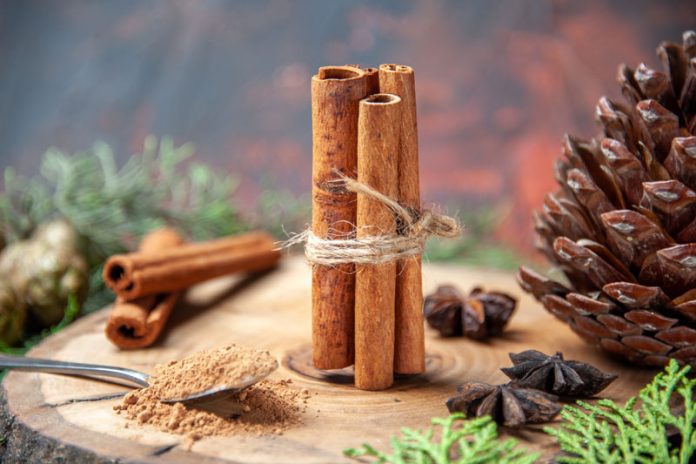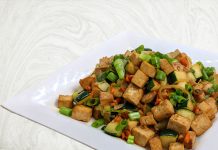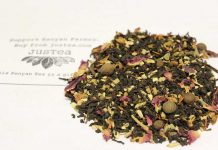
Cinnamon spice faces scrutiny as recent warnings reveal lead risks in popular ground cinnamon products, raising concerns for consumers and chefs.
Cinnamon spice – a beloved ingredient that adds warmth and nostalgia to our kitchens has long been a staple in delightful dishes, from fragrant cinnamon rolls to festive pumpkin pies.
Its sweet, woody aroma, often enhanced by a hint of citrus, draws in anyone passing by a bakery. This beloved spice not only elevates flavours but also evokes cherished memories of holiday gatherings and cozy family traditions.
However, recent reports have cast a concerning shadow over this favorite spice. In November 2023, the U.S. Food and Drug Administration (FDA) recalled several apple purée pouches linked to lead poisoning among more than 500 children, with the source traced back to contaminated cinnamon.
Following this alarming revelation, the FDA cautioned consumers about 17 ground cinnamon products that contain elevated lead levels, warning that prolonged exposure may pose health risks.

Consumer Reports Investigation
In response to these findings, Consumer Reports undertook an extensive analysis of 36 ground cinnamon products and spice blends, such as garam masala and five-spice powder. The results have raised serious concerns for cinnamon lovers, pinpointing both the safest and least safe brands to choose from.
Out of the 36 products evaluated, only six (about 25%) earned a spot in the “Best to Use” category, with 365 Whole Foods Market’s organic ground cinnamon topping the list.
You can find the detailed results of the Consumer Reports investigation at the end of this article.
How Does Lead Contamination Occur?
Lead, a naturally occurring element, can contaminate cinnamon trees during their growth and through processing. As trees grow, they absorb trace amounts of lead from soil and groundwater, including lead introduced through industrial byproducts. This absorption can lead to the accumulation of lead in the bark, a process that intensifies during the drying phase.
Cinnamon, known for its rich brown hue, is derived from the dried inner bark of two main tree species. The first, Cinnamomum verum, is a bushy evergreen native to Sri Lanka (formerly known as Ceylon), the Malabar Coast of India and Myanmar. This variety is prized for its delicate flavour and is also cultivated in South America and the West Indies.
Related: Kerala: Basking in the Beauty and Flavours of India’s Malabar Coast
The second species, Cinnamomum cassia, commonly known as cassia, is an aromatic evergreen tree native to the lowlands of southern China. It is extensively grown in countries like Indonesia and Vietnam, yielding what is commonly referred to as Chinese cinnamon.
Most cinnamon spice consumed in the U.S. is imported from regions like Indonesia, Sri Lanka, and Vietnam, where regulations on chemical contaminants may be lax. Lead can also enter the spice through processing equipment, storage containers, and packaging.
What This Means for Consumers
As we embrace the flavours of fall and prepare for the holiday season, it’s crucial to remain vigilant about the cinnamon products we choose.
While cinnamon spice continues to inspire culinary creativity and warm memories, being aware of the risks associated with lead contamination is essential for safeguarding our health.
Stay informed and select high-quality, safe products – your favorite recipes deserve the best ingredients!
Consumer Reports tested 36 products. Below are their findings. Their food experts advise consumer to avoid the “Do Not Use” category. For more details, click here.
DO NOT USE
| BRAND | TYPE | LEAD CONTENT (ppm) | DAILY USAGE |
| Paras* | Cinnamon Powder | 3.52 | |
| EGN* | Cinnamon Powder | 2.91 | |
| Mimi’s Products | Ground Cinnamon | 2.03 | |
| Bowl & Basket | Ground Cinnamon | 1.82 | |
| Rani Brand | Ground Cinnamon | 1.39 | |
| Zara Foods | Cinnamon Powder | 1.27 | |
| Three Rivers | Cinnamon Stick Powder | 1.26 | |
| Yu Yee Brand | Five Spice Powder | 1.25 | |
| BaiLiFeng | Five Spice Powder | 1.15 | |
| Spicy King | Five Spice Powder | 1.05 | |
| Badia | Cinnamon Powder | 1.03 | |
| Deep | Cinnamon Powder | 1.02 |
OKAY TO USE
| BRAND | LEAD CONTENT (ppm) | DAILY USAGE | |
| Happy Belly | Ground Cinnamon | 0.87 | Up to ¼ tsp. |
| Kirkland Signature | Organic Saigon Cinnamon | 0.80 | Up to ¼ tsp. |
| Great Value | Ground Cinnamon | 0.79 | Up to ¼ tsp. |
| Penzeys | Ceylon Cinnamon | 0.78 | Up to ¼ tsp. |
| Ziyad Brand | Premium Seven Spice Blend | 0.73 | Up to ¼ tsp. |
| Trader Joe’s | Organic Ground Cinnamon | 0.69 | Up to ¼ tsp. |
| The Spice Lab | Organic Ground Cinnamon | 0.60 | Up to ¼ tsp. |
| Good & Gather | Ground Cinnamon | 0.56 | Up to ¼ tsp. |
| Morton & Bassett San Francisco | Ground Cinnamon | 0.55 | Up to ¼ tsp. |
| Penzeys | Vietnamese Cinnamon | 0.55 | Up to ¼ tsp. |
| Swad | Garam Masala Powder | 0.40 | Up to ½ tsp. |
| Penzeys | Ground Cinnamon | 0.37 | Up to ½ tsp. |
| Wei-Chuan | Five Spice Powder | 0.36 | Up to ½ tsp. |
| Natural Plus Green | Five Spices Powder | 0.35 | Up to ½ tsp. |
| Simply Organic | Cinnamon | 0.28 | Up to ¾ tsp. |
| Shan | Garam Masala Powder | 0.28 | Up to ¾ tsp. |
| Abido Spices | 7 Mixed Spices | 0.23 | Up to 1 tsp. |
| McCormick | Cinnamon | 0.23 | Up to 1 tsp. |
BEST TO USE
| BRAND | TYPE | LEAD CONTENT (ppm) | DAILY USAGE |
| Sadaf | Seven Spice | 0.15 | Up to 1 ½ tsp. |
| 365 Whole Foods Market | Ground Cinnamon | 0.12 | Up to 2 tsp. |
| Loisa | Organic Cinnamon | 0.04 | Up to 5 ¾ tsp. |
| Morton & Bassett San Francisco | 100% Organic Ground Cinnamon | 0.04 | Up to 6 tsp. |
| Sadaf | Cinnamon Powder | 0.04 | Up to 6 ¾ tsp. |
| 365 Whole Foods Market | Organic Ground Cinnamon | 0.02 | Up to 16 tsp. |
Note:
Number of teaspoons based on unrounded ppm values.
*Manufacturer says product will be removed from the market.







































